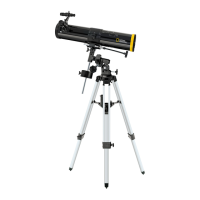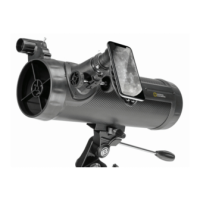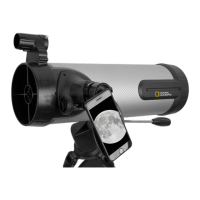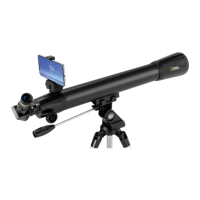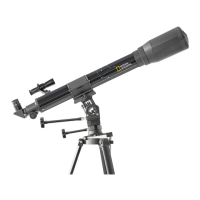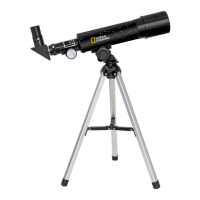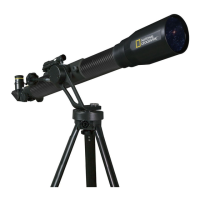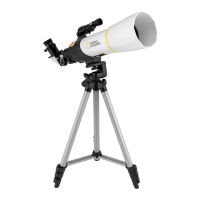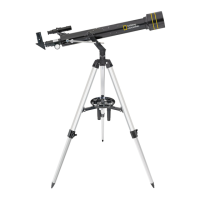
Do you have a question about the National Geographic NG60AZ and is the answer not in the manual?
| Brand | National Geographic |
|---|---|
| Model | NG60AZ |
| Category | Telescope |
| Language | English |
Crucial safety warning regarding direct solar observation and potential blindness.
Safety notice concerning small parts, unsuitable for children under 3 years old.
Instructions for extending tripod legs, connecting them to the yoke, and attaching the support bracket.
Steps to attach the accessory tray, optical tube assembly, and fine adjustment rod.
Guide for attaching the finder scope, diagonal mirror, and eyepieces to the telescope.
Instructions for inserting the 3X Barlow lens for increased magnification.
Detailed steps for aligning the finder scope with the main telescope for accurate targeting.
Guidance on calculating telescope magnification and factors affecting optimal viewing.
Steps for preparing the telescope and location for astronomical observation.
Instructions on using the 1.5X image erector for correct terrestrial image orientation.
Guidance on preventing dust collection and cleaning optical components safely.
Recommendations for viewing the Moon, planets, galaxies, nebulae, and star clusters.
Answers to common questions regarding viewing range, image clarity, and apparent movement.

